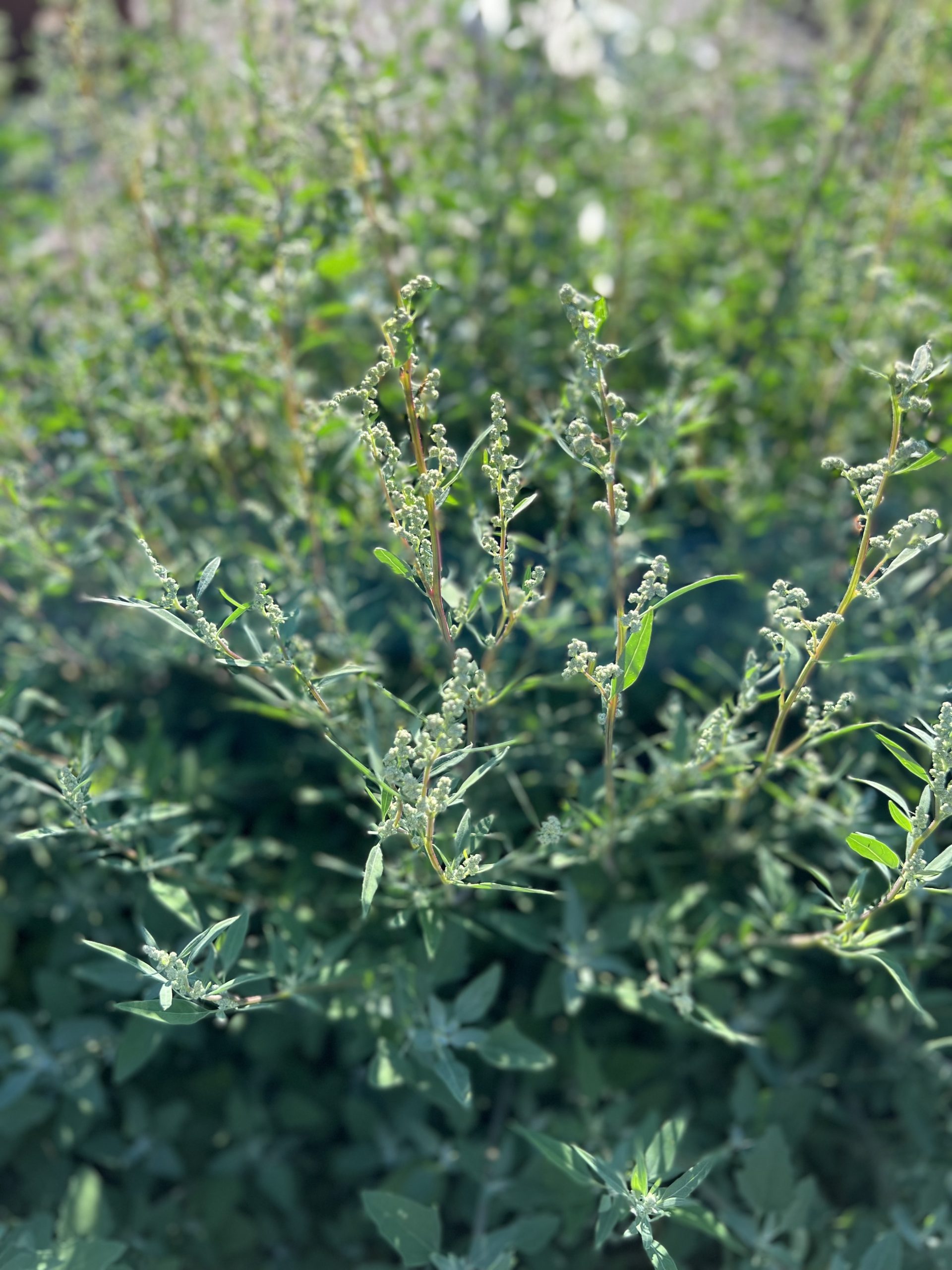White goosefoot
The partially reddish stem of the white goosefoot (Chenopodium album) is slightly furrowed. The leaves are gray-green on top and lighter on the underside.
The leaf shape is elongated oval to diamond-shaped and usually toothed at the edges.
The small greenish flowers grow panicle-like in dense clusters. The plant reaches a height of up to 1.50 m.
Family and collection time
White goosefoot belongs to the foxtail family.
Parts of the plant used: Leaves
Collection time in detail:
- Leaves: All year
Healing effect and application
Therapeutic properties:
Anti-inflammatory, mild laxative; used for toothache, inflammation of the oral mucosa, digestive problems, flatulence, weak bladder, rheumatism, eczema, joint inflammation.
Ingredients: (selection)
- Saponins
- Oxalic acid
- Protein
- Vitamin C
Recipe for the kitchen:
The most common use is as spinach. Young leaves and shoots are also suitable for salads, older leaves fit well for casseroles. The inflorescences can be prepared similarly to broccoli. The goosefoot, like the real spinach, should not be eaten excessively, because it contains saponins and oxalic acid.
References:
Beiser, Rudi: Our edible wild plants. Kosmos Nature Guide 2018
Bühring, Ursel: Praxis-Lehrbuch der modernen Heilpflanzenkunde; Grundlagen – Anwendung – Therapie. Sonntag Publishing House Stuttgart 2005
Pahlow, M. Pharmacist: Medicinal Plants. Bechtermünz Publishing House Augsburg 2001
Schneider, Christine: Finding wild herbs. Ulmer Publishing House Stuttgart 2017
Recipe by Dr. Markus Strauß www.dr-strauss.net

